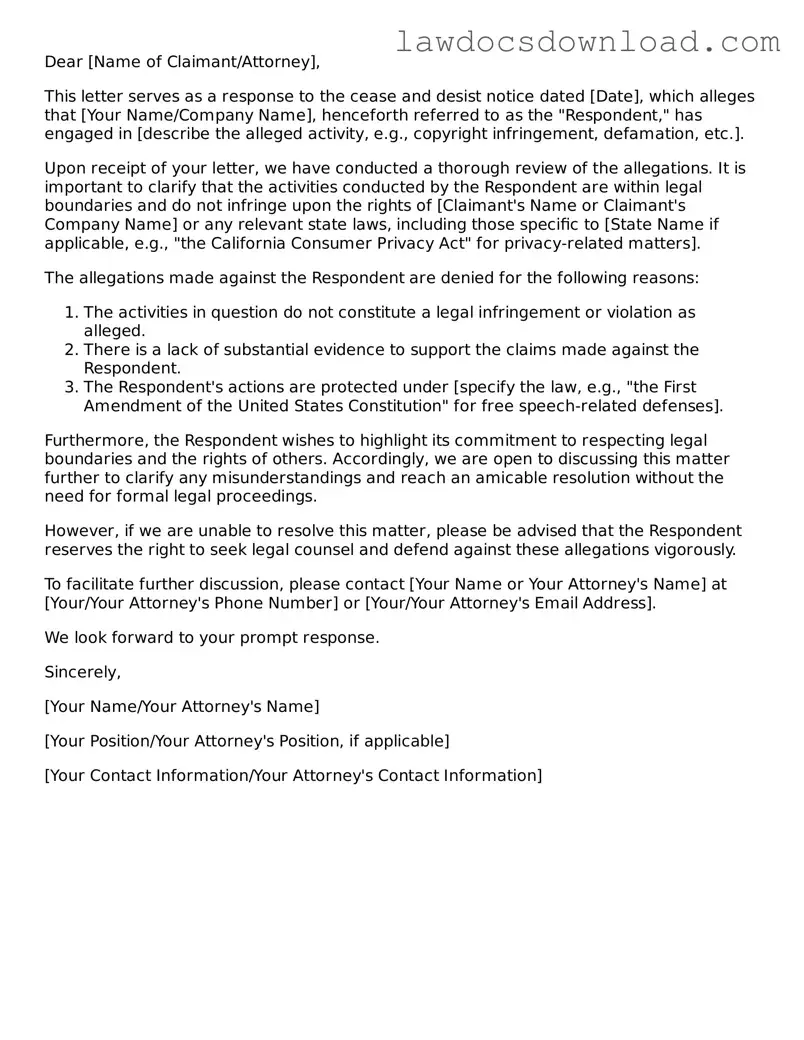When dealing with a cease and desist letter, people often feel overwhelmed, which can lead to mistakes in their response. A common error is not responding at all. Ignoring such a letter can escalate the situation, possibly resulting in legal action against you. It's critical to acknowledge the letter, even if you believe it's without merit, to avoid potential complications down the line.
Another misstep is responding too hastily. With emotions running high, there's a temptation to fire back immediately, either to refute the claims or to express frustration. However, this can result in a poorly thought-out response that might inadvertently admit fault or escalate the dispute. Taking time to cool down and think through the situation is essential.
The tone of the response is also where many go wrong, with some adopting an aggressive or confrontational tone. While it's understandable to feel defensive, a response filled with anger or sarcasm can harm your position. Keeping a professional tone is more likely to lead to a favorable outcome.
Trying to handle the situation without legal advice is a critical error. Even if you believe the cease and desist letter is baseless, consulting with a lawyer ensures that your response is legally sound and aligns with your best interests. Lawyers are trained to see nuances that you might miss.
A frequent faux pas is providing too much information. In an effort to prove their point, individuals often overshare, providing details that were not initially part of the dispute. This can unintentionally give the opposing party more ammunition. It's important to be concise and stick to the facts relevant to the cease and desist letter.
Some individuals mistakenly promise more than they can deliver in their rush to resolve the situation. If you agree to terms that are unsustainable, you might find yourself unable to comply, leading to further disputes. Be realistic about what you can and cannot do.
Another issue is ignoring the specific claims made in the cease and desist letter. Each claim should be addressed individually rather than providing a generic or vague response. This demonstrates that you have thoroughly considered the allegations and are responding thoughtfully.
There’s also a tendency to submit the response without proper proofreading. A response with typos, grammatical errors, or unclear language can undermine your credibility and professionalism. Taking the time to review your response carefully can prevent misinterpretations.
Significantly, some fail to keep a record of their correspondence. Maintaining a copy of the cease and desist letter, your response, and any other communications is vital. Should the dispute escalate to legal action, these documents will be crucial evidence.
Finally, a common mistake is not following up after sending the response. If you don’t receive a confirmation of receipt or a subsequent reply regarding your response, it’s important to follow up. This ensures that the matter is being addressed and keeps the lines of communication open.
